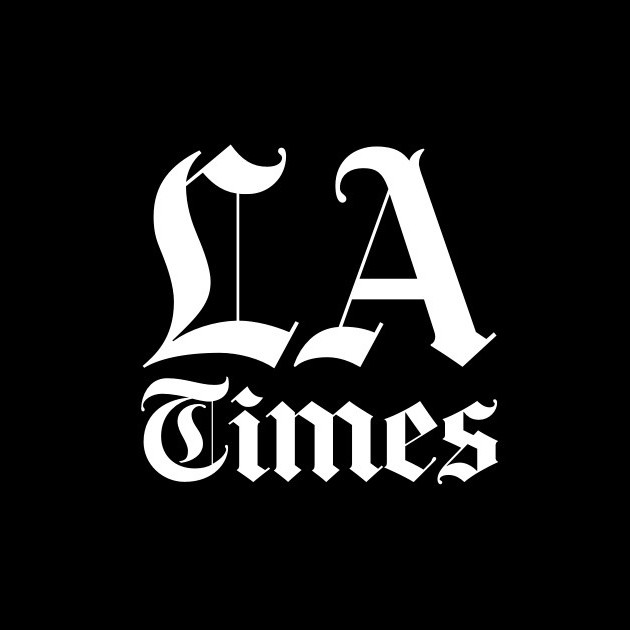David Collins Places “Beautiful, Bright Spotlight” On World Of Ballroom With HBO Max’s ‘Legendary’
![]()
David Collins Places “Beautiful, Bright Spotlight” On World Of Ballroom With HBO Max’s ‘Legendary’:
With voguing competition series Legendary, David Collins aimed to evolve the brand he’d created over the years with acclaimed reality series like Queer Eye, providing “transformation through information, told with comedy that has heart.”
Debuting on HBO Max in May—as one of the centerpiece shows to launch the streaming service—Legendary takes a deep dive into the world of ball culture, spotlighting various voguing teams, as they compete in fashion and dance challenges, with a $100,000 prize on the line.
Over the years, with Queer Eye, three-time Emmy winner Collins has enjoyed the opportunity to celebrate the LGBTQ community. And with Legendary, the EP’s goal was to place “this beautiful, bright spotlight” on a community that is even more marganizaled.
For Collins, the inspiration behind the series came after he was invited to a ball in West Hollywood. “Renata [Lombardo] and Shant [Tutunjian] are executive producers on the show, and they’re the ones that came to the table and said, ‘Hey, let’s go check this out,’” the Scout Productions co-founder says. “They had forewarned me that, ‘It’s not a big ball, but we really want you to come.’”
When Collins got to the ball, he learned that what his colleagues had told him was true. “There was probably 100 people at best,” he recalls. “It was folding tables and bright overhead lighting, nothing club-like or cool about it.”
Nonetheless, at this ball, he ended up having the time of his life. “What was amazing about it was that everybody was dressed to the nines,” Collins says. “Everybody was trying to bring a look and create a moment, and they all entered the gymnasium space and had their big moment.”
Interestingly, the turning point in the evening that would drive the EP to create the show came as he left the event, taking the elevator down to the parking garage. “I rode down with these two African-American boys who couldn’t have been 16 or 17 years old, who were bawling crying, but also beyond giddy with joy and excitement, because they had just been asked to be in the House of Gucci,” Collins shares. “So, just standing in the parking lot with them, I got goosebumps, I choked up, and I could feel the connection that they had to what was happening in that room.”
It was this moment that led Collins to take a step back and ask himself: What is ballroom? “I had seen Paris Is Burning; I had heard about ballroom. Obviously, I knew about Pose, but I didn’t know the history. I didn’t know what this was really about,” he reflects. “When I went back to the office, I told [EP] Rob [Eric], ‘This ball was amazing,’ and he was like, ‘Oh, I’ve been to them since the ’80s.’ So, he had a different perspective than I did.”
Out of the combination of Collins’ “excitement and naïveté,” and Eric’s personal history and knowledge, Legendary was born, the EP says, “and it was one of those moments where we realized, ‘This has not been done.’”
Of course, in thinking about making a show based in the ballroom world, Collins and his collaborators went back and looked at each show that had been made in the past about this culture. “There was a show on VICE called My House, and some documentaries here or there. But they were all a little sad. They were telling the behind-the-scenes story, which is what the ballroom culture was born out of. It was born out of a need for so many young boys and girls who had been abandoned by their families of origin, probably because they were gay or trans. They ended up on the streets, and what happened was that these house parents, a house mother and a house father, would say, ‘Hey, come on in. We’ll all live together,’ and they would act as a parent,” the EP explains. “They weren’t doing all things, but they made sure they got fed, they made sure they went to school, they made sure that they learned to dance, and then they performed in the balls.”
In My House, Collins saw the “cultural foundation of the ballroom scene,” which he hoped to celebrate in a big way. But at the same time, he saw the “docu-follow” version of what his show could be—a version that would potentially be a bit limiting. “You’re going into that world, and you’re seeing the actual day-to-day lives of all of the house members, as they prep to go to a ball each week,” the EP says, “and while that’s great, what we really wanted to figure out is, how do we do a ball for every episode?”
In the real world of balls, Collins says, there are about three “huge balls” a year, with around 100 small-to-medium events in between. But on Legendary, the EP took on the challenge of shooting nine completely different balls, with totally different themes, challenges and categories, over the course of just nine weeks. Ultimately, each episode had to come in at no more than an hour. “We wanted the ball to be front and center, and so with the basic arcing competition format, we were like, ‘All right, we’re going to figure out how we’re going to have a ball every episode, and a certain number of houses.’ I will tell you, we went from 12 houses, to 10 houses, to eight houses,” Collins says. “At one time, we were down to six houses, and it’s still a lot of houses, because each house has a house parent plus four kids. So, you’re starting, right off the bat, with a lot of characters to follow, and a lot of storytelling to do.”
For Collins, it was the balance of Legendary’s ambitions, and the intent behind the series, that made hitting on the right number of houses one of the most critical considerations. “We knew that that storytelling—that connection to those houses, to the house parents, and to the individuals—was absolutely everything for us. Because, look. You can glitz up anything; you can make it shiny and bright. But if you don’t have the heart behind it, it’s not going to be the same,” he reflects. “So, the format itself evolved over almost a two-year period, where we tore it apart and put it back together again, six ways to Sunday, with our team.”
In addition to the number of balls brought to life in Legendary, one of the show’s great accomplishments is its distinct visual style. In retrospect, Collins credits this part of the vision to Rob Eric, the Chief Creative Officer at Scout Productions. “It was critical that we celebrate [ball culture] properly, and not to take away from any other big, shiny-floor show, [but] we didn’t want it to be shiny floor,” Collins laughs. “So, we started calling it a ‘matte finish,’ because we couldn’t come up with anything better than it had a cool matte finish.”
On logistical and creative levels, Collins gained a greater understanding of how to produce the show, after attending New York’s “humongous” Porcelain Ball with showrunners Jane Mun and Josh Greenberg. “[There were] thousands of people waiting in line from 3:00 in the afternoon. The ball didn’t even start until 9:00, and it went until 5:00 AM. So, we were there, our feet bleeding at hour four, and we realized how complex the balls are. There’s literally hundreds of categories, and one category bleeds into the next,” he explains. “One category is more dance, versus more runway, which is all the various elements of voguing—there’s five that make it up. So, we really had to figure out, how do we showcase all of the important pieces, and also cram it all into an hour, and not lose the beauty of the ball, and the absolute joy that you feel when you come to a real ball?”
In Collins’ description, the Porcelain Ball was “a three-ring circus, a cluster of insanity.” So, this level of scope naturally gave the EP pause. “The executive producers and I kept looking at each other like, ‘Oh my goodness. If this is what a ball is, we’re in trouble,’ because there were just so many things happening,” he says. “But we realized less is more, simple is better and we thought, ‘Okay, let’s just shoot reality until our heads pop off.’”
When Collins and his team got around to casting Legendary, they took a multi-pronged approach. “What we didn’t realize is that ballroom had become an international dance sport. It’s all over, and we were first thinking, ‘Oh, are we going to shoot in LA? Maybe we’ll just do LA-based houses.’ And then we started to open that up,” he says. “We came to find out, there’s hundreds of houses, some bigger than others. There’s also houses that have historical importance: Willi Ninja, the House of Ninja, who is considered the godfather of ballroom and voguing. We couldn’t not have the House of Ninja. So, we started to use simple things like that, where we realized, ‘Okay, House of Ninja, for sure.’”
When meeting with voguing teams and house parents in LA, the EP found it important to listen as much as possible, and seek input, with regard to the kind of voguing show they’d like to see. “We stopped, and we’re like, ‘Listen, we want to help you tell your story. We want to celebrate you, but you’ve got to tell us how. What do you need? What do we do right, and what do we do that’s wrong?’” he shares. “And I’ll tell you, that was probably the smartest decision we made.”
Particularly critical notes came to Collins from Dashaun Wesley and Leiomy Maldonado, two icons in the world of ballroom, who appear in the series. “They were very cautious about, ‘Look, it’s got to stay authentic. You can’t start adding all these formatic tropes that television sometimes does,’” the EP recalls. “For TV, we push things in to fit that little box, but we realized we wanted to stay as authentic as possible. So, we just kept them in the loop.”
For Collins, one of many highlights of making Legendary was the first meeting he and his team had with executives at HBO Max. “You don’t get to say this a lot about making TV, but I will tell you from day one, Bob Greenblatt invited us to come in and meet Kevin [Reilly], Sarah [Aubrey] and Jen [O’Connell], to talk about various shows, and all kinds of stuff that we had coming up,” he says. “First of all, you don’t get the entire four heads of the network, sitting in one room at the same time, so we were so grateful and so blessed that that moment happened.”
When the EP presented a sizzle reel he’d put together for the show, the experience was magical, in a different way than he had ever seen. “Sarah instantly gravitated to it and said, ‘This has to be made. This is important. This is a story that must be told,’ and they bought it right there in the room. So, for us, that beginning couldn’t have gotten any better. Like, you sell a show in the room—that doesn’t happen anymore,” he notes. “But we did, and it was because of that moment that we knew we had great partners. And honestly, that is what makes the difference, when the producers, and the creative vision, and the network work as a team.”
While Legendary is still in the thick of its first season, Collins hopes for many more seasons to come, as well as further expansions of the format. “One thing that we’re doing with Queer Eye that we would love to do with Legendary is make international versions, especially because as I said, this is an international dance sport,” he says. “So, I think there’s a lot of opportunity for the format.”
View this article at Deadline.

 Previous Post
Previous Post Next Post
Next Post
